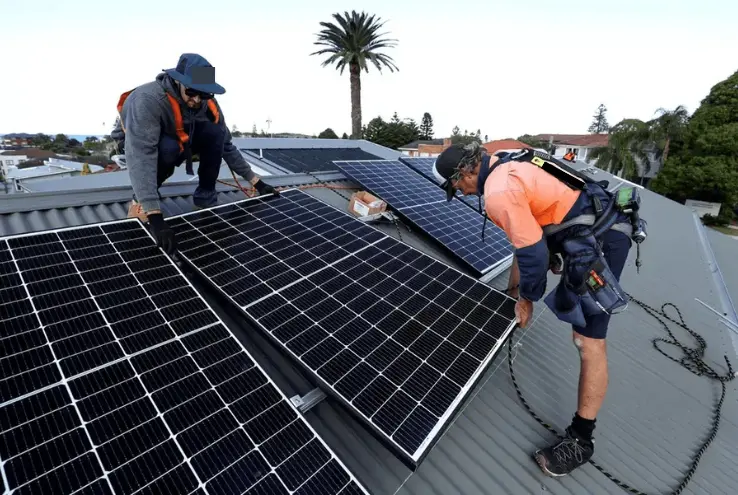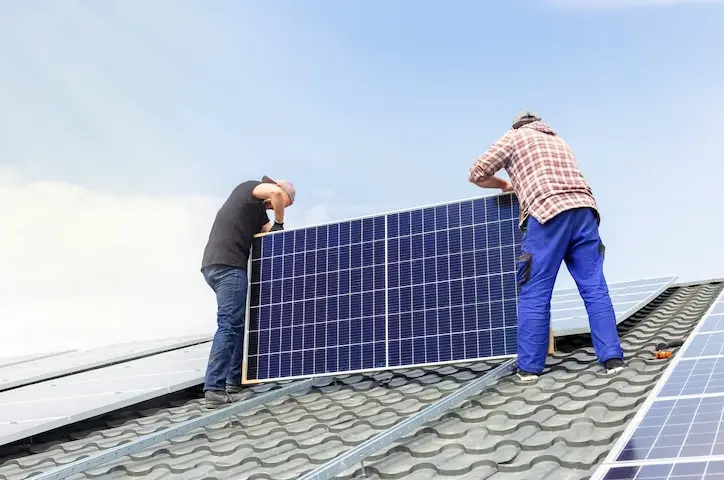Solar Panels Installation: Unveiling the Costs of 6.6kW and 10kW Solar Systems
As the world shifts towards sustainable energy solutions, solar panels have taken centre stage as a crucial component of this transformation. This comprehensive guide aims to provide you with an in-depth understanding of solar panels, their benefits, installation processes, and costs. By delving into the intricate details of solar energy systems, we empower you to make informed decisions that not only contribute to a greener future but also maximize the return on your investment.
Introduction to Solar Panels and Their Importance
In the realm of renewable energy, solar panels stand as a testament to technological innovation. These remarkable devices harness the sun’s radiant energy and convert it into usable electricity through the photovoltaic effect. The significance of solar panels lies in their ability to generate clean and sustainable power, reducing our dependency on fossil fuels and mitigating the impact of climate change.

Understanding Solar Energy
At the heart of solar panels lies the concept of solar energy. This form of renewable energy stems from capturing sunlight and converting it into electricity using photovoltaic cells. These cells, often organized into solar panels, facilitate the transformation of sunlight into a direct current (DC), which is then converted into alternating current (AC) through an inverter. The result is a clean energy source that powers homes, businesses, and even feeds surplus electricity back into the grid.
Benefits of Solar Panels for Homes
Embracing solar panels on residential properties brings forth a multitude of advantages. Notably, solar panels contribute to energy independence, decreasing reliance on non-renewable sources. They also play a pivotal role in reducing electricity bills while positively impacting the environment. Furthermore, solar energy systems require minimal maintenance, making them an efficient and hassle-free addition to your home.
The Basics of Solar Panel Systems
Components of a Solar Panel System
A solar panel system consists of several integral components working in harmony to produce electricity:
- Solar Panels: These panels are composed of photovoltaic cells responsible for capturing sunlight and initiating the energy conversion process.
- Inverter: Acting as the heart of the system, the inverter converts the DC generated by solar panels into AC, which is compatible with household electrical systems.
- Mounting Structure: Securely anchoring the solar panels, the mounting structure ensures optimal sun exposure, typically positioned on rooftops or open spaces.
- Battery (optional): Some systems incorporate batteries to store excess energy generated during sunny days for use during periods of reduced sunlight.
Working Principle of Solar Panels
The underlying principle of solar panels revolves around the photovoltaic effect. As sunlight strikes the surface of photovoltaic cells, electrons are released, generating an electric current. This DC is transformed into AC by the inverter, making it suitable for powering various appliances and devices within the home.
Evaluating Your Energy Needs
Calculating Household Energy Consumption
Before delving into solar panel installation, it’s imperative to assess your household’s energy consumption. Analyzing utility bills and understanding daily and monthly energy usage patterns aids in determining the appropriate system size.

Determining Appropriate Solar System Size
Selecting the right system size is pivotal for optimizing solar panel benefits. A well-sized system ensures the generation of sufficient energy to cover your usage and potentially export excess energy. Factors such as available roof space, geographical location, and energy goals play a significant role in determining the ideal system size for your property.
Exploring Different Solar Panel Options
Monocrystalline vs. Polycrystalline Panels
Two prevalent types of solar panels are monocrystalline and polycrystalline panels. Monocrystalline panels boast higher efficiency and a sleek appearance, often preferred for residential installations. On the other hand, polycrystalline panels offer a cost-effective alternative without compromising overall performance.
Comparing Thin-Film Panels and Standard Panels
Thin-film solar panels, while slightly less efficient than traditional crystalline panels, offer flexibility in installation. They can be integrated into unconventional spaces and are favored for specific aesthetic or functional requirements.
Cost Factors in Solar Panel Installation

Initial Installation Costs
The cost of installing solar panels encompasses various expenses, including panel purchase, inverter, mounting structure, wiring, and labor. Although the upfront investment may seem substantial, it’s crucial to consider the long-term savings and return on investment that solar panels yield.
Long-term Savings and ROI
Over time, solar panels lead to significant reductions in electricity bills. Excess energy generated can be sold back to the grid, further offsetting costs. Federal tax credits and local incentives can substantially shorten the payback period, making solar panel installation a financially sound decision.
Understanding Government Incentives and Rebates
Solar Rebate Programs in NSW
Residents of New South Wales (NSW) have access to various rebate programs and incentives that promote solar adoption. These initiatives aim to make solar panel installation accessible and affordable, encouraging households to embrace clean energy sources.
Federal Tax Credits for Solar
In many regions, including the United States, federal tax credits are offered to individuals and businesses investing in solar energy systems. These credits directly reduce tax liabilities and enhance the economic viability of solar installations.
Pricing and Factors Influencing Costs
Breakdown of Costs for 6.6kW System
The cost of a 6.6kW solar system is influenced by factors such as panel type, inverter efficiency, and installation complexity. It encompasses panel costs, inverter costs, installation fees, and potential additional components required for optimal performance.
Breakdown of Costs for 10kW System
For larger installations like the 10kW system suitable for commercial use, costs scale accordingly. While the initial investment increases, so does the potential for greater energy generation and subsequent savings.
Choosing the Right Solar Panel Installer

Researching Local Solar Installation Companies
Selecting a reputable solar panel installer is paramount for a successful installation. Researching local companies, reviewing their experience, credentials, and customer feedback, assists in making an informed decision.
Reading Customer Reviews and Testimonials
Customer reviews provide valuable insights into the quality of service offered by solar installation companies. Positive reviews and testimonials instill confidence in your choice of installer.
The Installation Process: Step by Step
Site Assessment and Preparation
Before installation, a thorough site assessment is conducted to determine optimal panel placement and sun exposure. Any necessary structural adjustments are made to ensure a secure installation.
Mounting Solar Panels and Wiring
Solar panels are securely mounted on designated structures, accounting for the optimal angle and orientation for maximum sunlight absorption. Wiring connections are established to link the panels, inverter, and the existing electrical system.
Connecting to the Grid

Net Metering and Feed-in Tariffs
Upon the panels becoming operational, excess energy can be fed back into the grid. Net metering enables homeowners to receive credits for surplus energy, reducing their energy bills. Feed-in tariffs may also provide compensation for energy exported to the grid.
Ensuring Compliance with Utility Regulations
Connecting to the grid involves adhering to utility regulations and obtaining the necessary approvals. This ensures a seamless integration of solar energy into the existing electrical infrastructure.
Maintenance and Monitoring of Solar Systems
Regular Cleaning and Inspection
To maintain peak performance, regular cleaning of solar panels is essential. Removing dust, debris, and potential obstructions guarantees maximum sunlight absorption. Periodic inspections identify any issues that could affect efficiency.
Utilizing Monitoring Apps for Performance Tracking
Monitoring apps offer real-time insights into your solar system’s performance. They allow you to track energy production, consumption, and identify any anomalies, ensuring your system operates optimally.

Case Studies: Real-life Installations
Residential Installation with 6.6kW System
A case study of a residential installation with a 6.6kW system showcases the practical implementation of solar panels. It highlights energy savings, reduced carbon footprint, and the financial benefits achieved over time.
Commercial Installation with 10kW System
Examining a commercial installation with a 10kW system provides insights into larger-scale solar projects. This case study underscores the potential for significant energy generation and financial gains in commercial settings.
Environmental Impact and Sustainability
Reducing Carbon Footprint through Solar Energy
By embracing solar panels, individuals and businesses contribute to reducing carbon emissions. Solar energy systems produce clean electricity, mitigating the environmental impact associated with conventional energy sources.
Contributing to a Greener Future
Solar panels play a pivotal role in advancing sustainability and paving the way for a greener future. Their adoption supports global efforts to combat climate change and reduce reliance on non-renewable resources.

Financial Considerations: Is Solar Worth It?
Payback Period for 6.6kW System
The payback period for a 6.6kW solar system varies based on factors such as installation costs, energy savings, and available incentives. Generally, this period is relatively short, resulting in long-term financial benefits.
Payback Period for 10kW System
For a 10kW system, the payback period follows a similar trajectory. While the initial investment is higher, the accelerated energy generation leads to a commendable return on investment.
Overcoming Common Misconceptions about Solar Panels
Myth: Solar Panels Only Work in Sunny Climates
Contrary to the misconception that solar panels only thrive in sunny regions, modern solar technology is designed to generate energy even in cloudy conditions. Panels can capture diffuse sunlight and convert it into electricity.
Myth: Solar Panels Require Constant Maintenance
It is engineered to withstand various weather conditions. While periodic cleaning and inspections are necessary, they do not require constant maintenance, making them a low-maintenance energy solution.
Future Trends in Solar Energy
Advancements in Solar Technology
Ongoing advancements in solar technology are enhancing panel efficiency and durability. Innovations like bifacial panels, improved storage solutions, and enhanced integration with smart home systems are shaping the future of solar energy.
Integration of Solar Power in Smart Homes
Solar energy is seamlessly integrating into smart homes, allowing homeowners to monitor energy production and consumption, optimize energy usage, and even remotely control their systems for maximum efficiency.
Summary: Making an Informed Decision
Weighing Costs and Benefits of Solar Panels
The decision to invest in solar panels requires a thorough evaluation of costs and benefits. While initial expenses are a consideration, the long-term financial savings, reduced carbon footprint, and energy independence make solar system panels an attractive choice.
Customizing Your Solar Solution
Each property is unique, and the ideal solar solution should be tailored to your energy needs, budget, and available space. Consulting with experts ensures your solar panel system is optimized for maximum performance.
Frequently Asked Questions (FAQs)
Solar panels have a lifespan of around 25 to 30 years, during which they continue to generate electricity efficiently. Regular maintenance can extend their operational life.
While DIY solar panel installation is possible, it’s recommended to engage professionals for optimal results. Expert installers ensure safety, compliance, and system performance.
Expert Insights: Interview with a Solar Panel Specialist
Expert’s Perspective on System Sizing
A solar panel specialist offers insights into system sizing, emphasizing the importance of tailoring the system to individual energy needs and goals.
Addressing Common Customer Concerns
The interview also addresses common concerns, such as maintenance, system reliability, and return on investment, providing expert guidance to prospective solar panel adopters.
Conclusion: Embracing Clean and Affordable Energy
In conclusion, solar panels stand as a beacon of clean and affordable energy. Their positive impact on energy independence, financial savings, and environmental preservation cannot be overstated. By integrating solar panels into our lives, we take a significant step towards a sustainable tomorrow.


